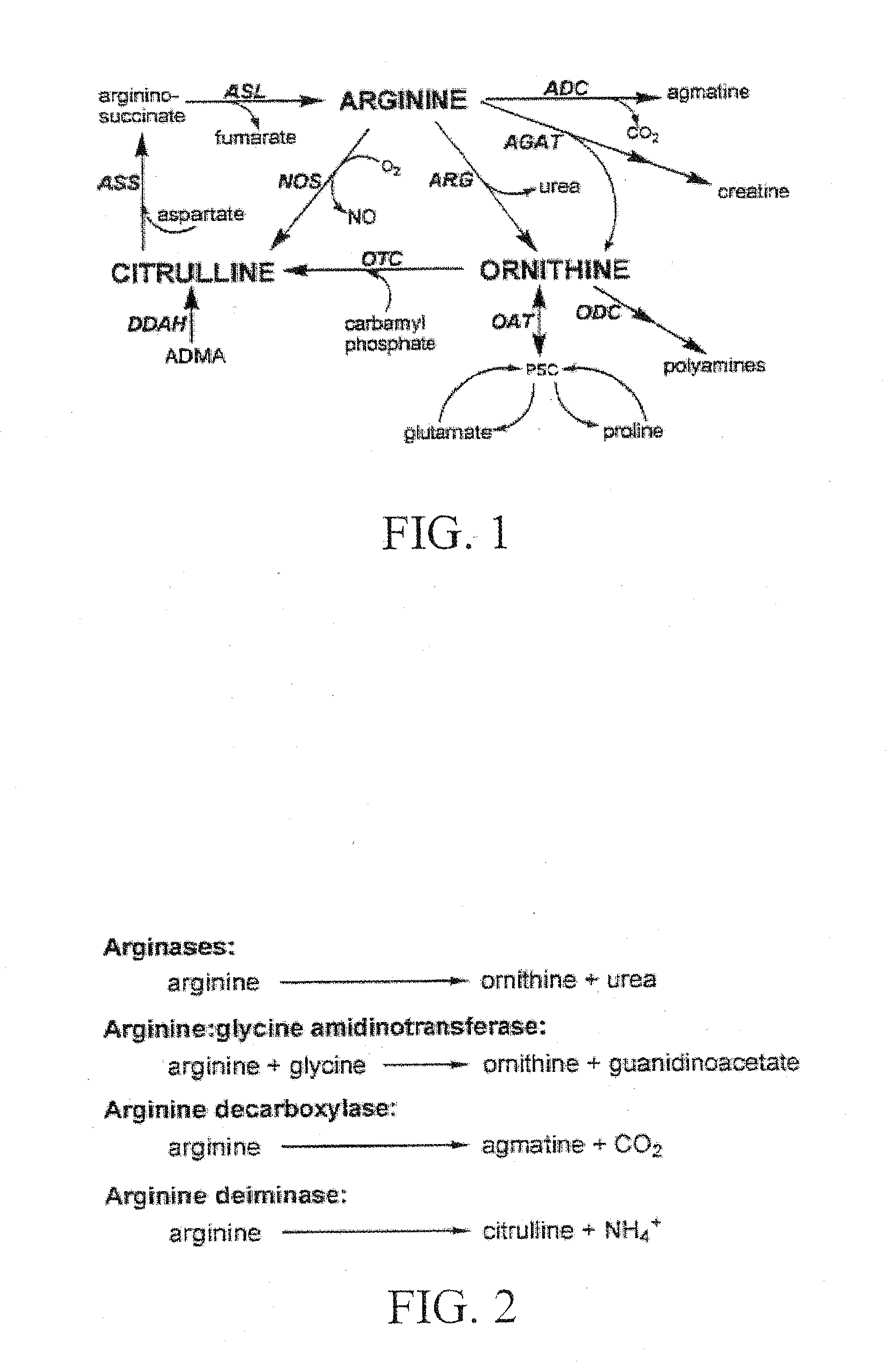Materials and Methods for Modulating Arginine Metabolism
a technology of arginine metabolism and materials, applied in the field of materials and methods for modulating arginine metabolism, can solve the problems of complexity not arisen, severe decrease in immune response, scar tissue damage, life-threatening and life-shortening diseases, etc., and achieve the effect of modulating in vivo levels of arginin
- Summary
- Abstract
- Description
- Claims
- Application Information
AI Technical Summary
Benefits of technology
Problems solved by technology
Method used
Image
Examples
Embodiment Construction
[0030]The present invention provides novel compositions and methods for their production and use in modulating arginine levels in vivo via pre-selected signal transduction / metabolic pathways to treat biological conditions. Preferably, the subject invention provides unique compositions and methods for the treatment of biological conditions associated with dysregulated arginine metabolism.
[0031]It is advantageous to define several terms before describing the invention. It should be appreciated that the following definitions are used throughout this application.
[0032]As used in the specification and in the claims, the singular form “a,”“an,” and “the” may include plural referents unless the context clearly dictates otherwise. Also, as used in the specification and in the claims, the term “comprising” may include the embodiments “consisting of” and “consisting essentially of.”
[0033]The term “dysregulated arginine metabolism,” as used herein, refers to abnormalities in arginine metabolic...
PUM
| Property | Measurement | Unit |
|---|---|---|
| polymorphic | aaaaa | aaaaa |
| acid | aaaaa | aaaaa |
| composition | aaaaa | aaaaa |
Abstract
Description
Claims
Application Information
 Login to View More
Login to View More - R&D
- Intellectual Property
- Life Sciences
- Materials
- Tech Scout
- Unparalleled Data Quality
- Higher Quality Content
- 60% Fewer Hallucinations
Browse by: Latest US Patents, China's latest patents, Technical Efficacy Thesaurus, Application Domain, Technology Topic, Popular Technical Reports.
© 2025 PatSnap. All rights reserved.Legal|Privacy policy|Modern Slavery Act Transparency Statement|Sitemap|About US| Contact US: help@patsnap.com

